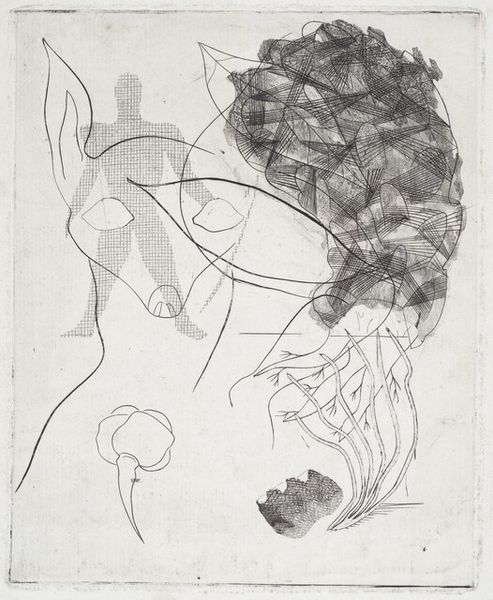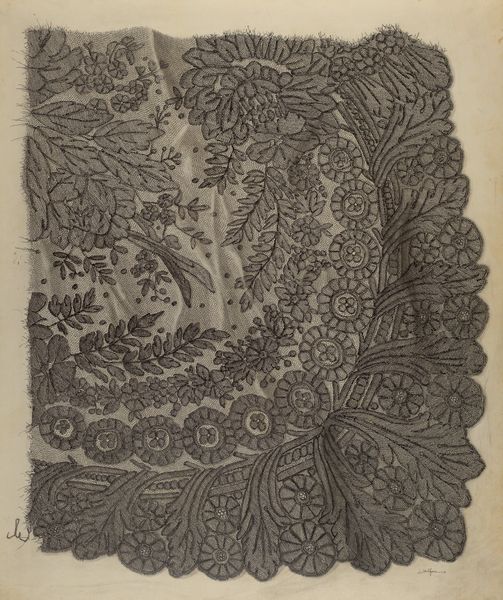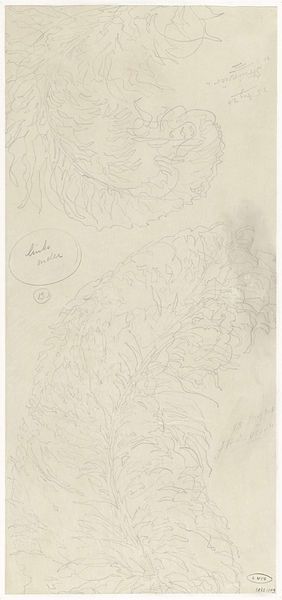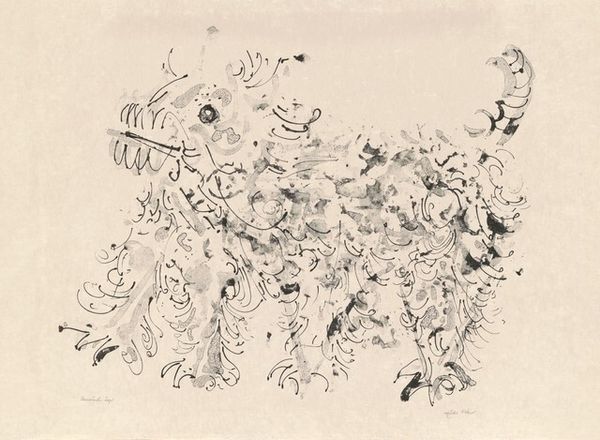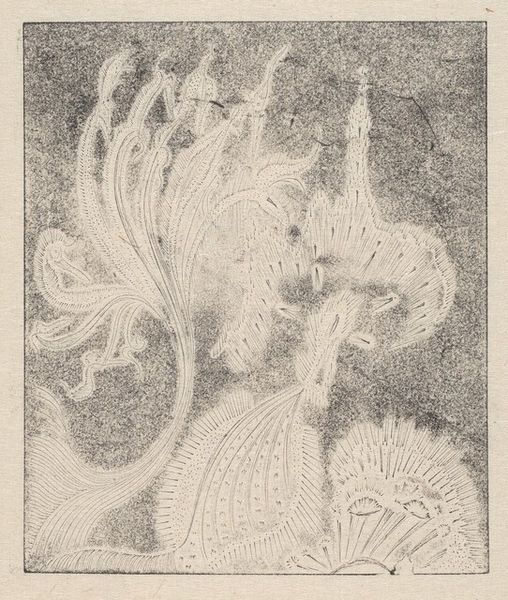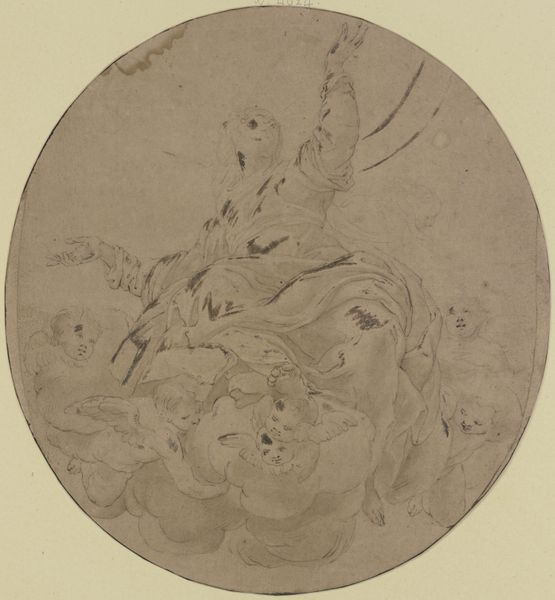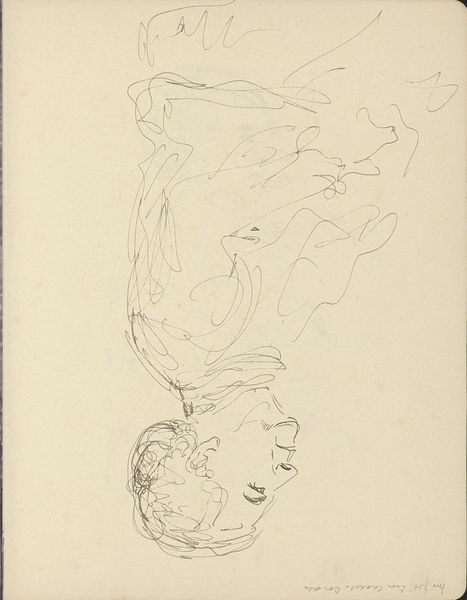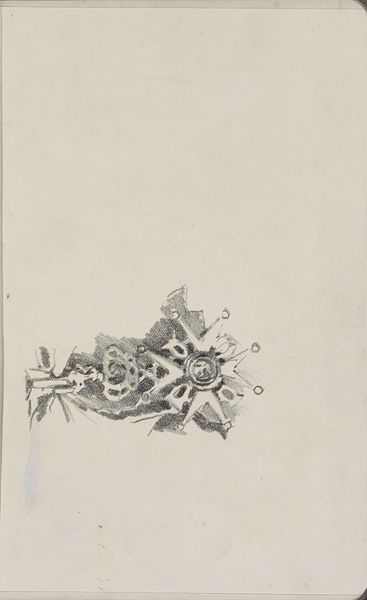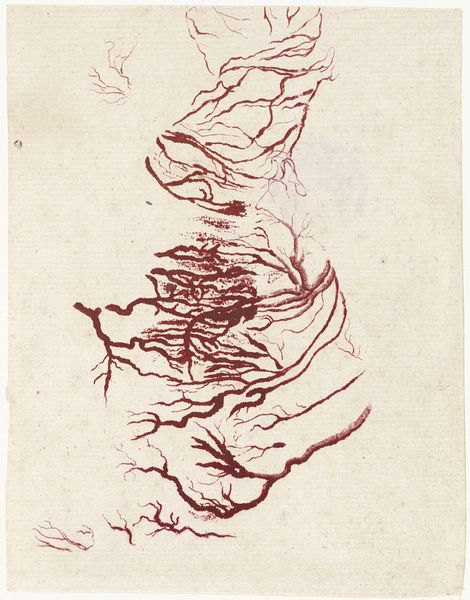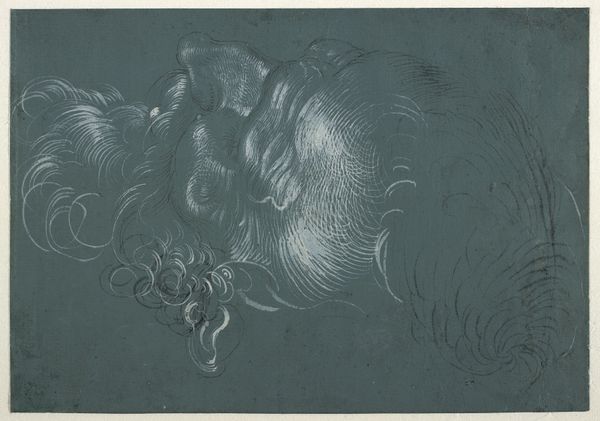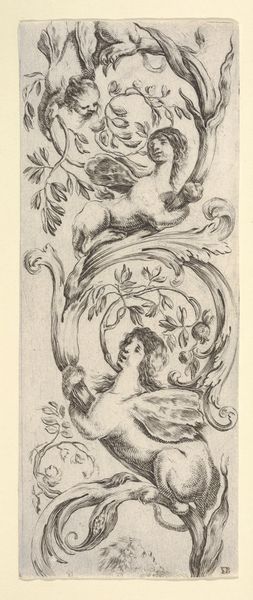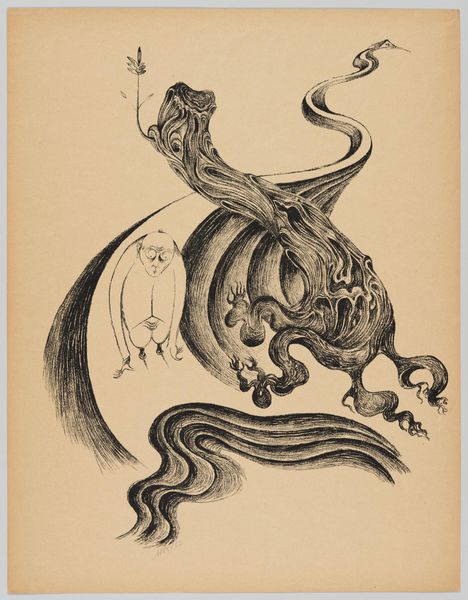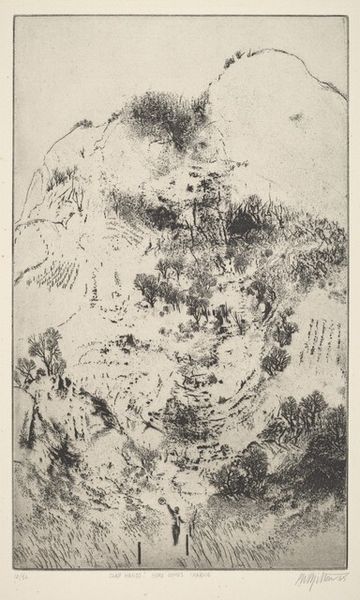
Copyright: National Gallery of Art: CC0 1.0
Albert Edgar Yersin made this print, “Beauty and the Beast,” using etching, a traditional printmaking technique. It’s worth considering how this method would affect the image we see. Etching involves covering a metal plate with a waxy, protective layer, then scratching an image into that layer with a sharp needle. The plate is then submerged in acid, which bites into the exposed metal, creating recessed lines. Ink is then applied to these lines, and the plate is pressed onto paper to transfer the image. Look closely, and you'll notice the network of lines and dots that define the figures and the background. There's real labor involved. Yersin’s choice of etching is significant, connecting his surreal imagery to a long history of printmaking, skilled traditions, and graphic design. His choice allows him to exploit the qualities of line, texture, and form. It's in these processes and materials that the artwork finds its full meaning. The contrast between the detailed etching and the surreal subject matter prompts us to consider the amount of work involved in the production process, and the way printmaking bridges craft and fine art.
Comments
No comments
Be the first to comment and join the conversation on the ultimate creative platform.
